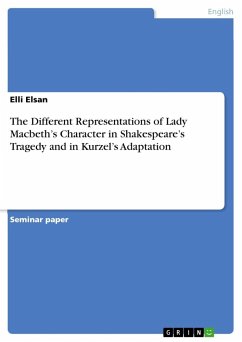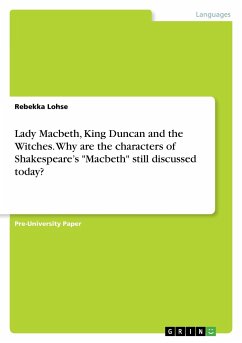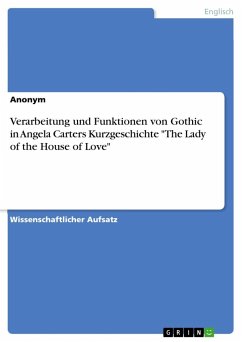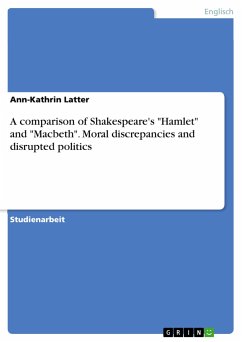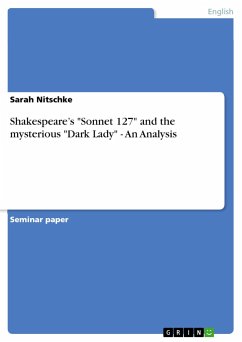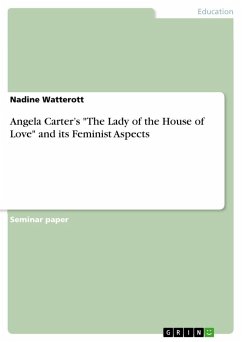
Women as leaders. A comparison between Shakespeare's Lady Macbeth and Claire Underwood from House of Cards

PAYBACK Punkte
0 °P sammeln!
Seminar paper from the year 2020 in the subject English Language and Literature Studies - Literature, grade: 2,3, University of Augsburg, language: English, abstract: This paper tries to compare women as leaders and, more broadly, feminist ideas by comparing Skaespeare's "Lady Macbeth and the character Claire Underwood from the series "House of Cards". This term paper, then, examines the development of feminism set in comparison between the renaissance and today, using those two works as examples.In recent years a strong resurgence of feminist activism has developed. Young women are having an ...
Seminar paper from the year 2020 in the subject English Language and Literature Studies - Literature, grade: 2,3, University of Augsburg, language: English, abstract: This paper tries to compare women as leaders and, more broadly, feminist ideas by comparing Skaespeare's "Lady Macbeth and the character Claire Underwood from the series "House of Cards". This term paper, then, examines the development of feminism set in comparison between the renaissance and today, using those two works as examples.In recent years a strong resurgence of feminist activism has developed. Young women are having an increased interest in feminist ideas to give meaning to their lives. This revival of feminism is reflected in the formation of countless feminist groups around the world and the introduction of various feminist projects and campaigns, which are regularly reported on in the media, for example such as the Women's Global Empowerment Fund or the National Organization for Women. This term paper examines the development of feminism set in comparison between the renaissance and today, using two works as examples. The representation of Claire Underwood in the BBC series House of Cards in comparison with the representation of Lady Macbeth in Shakespeare's Macbeth. Macbeth is a tragedy written by William Shakespeare in the early 17th century.




